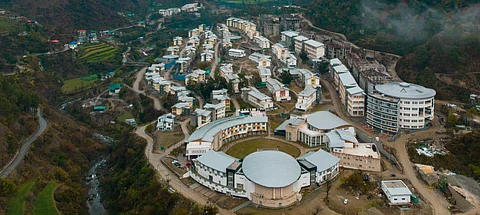

Researchers at the Indian Institute of Technology (IIT) in Mandi have created a material that can make stealth vehicles and covert establishments harder to detect by radar. The material is capable of absorbing a wide range of radar frequencies, regardless of the direction of the incoming signal, according to a report by PTI.
Giving more details, the report said that it can also be used to cover windows or glass panels of stealth vehicles and covert establishments that might be invisible to radar. The research has been published in the journal "IEEE Letters on Electromagnetic Compatibility Practice and Applications", as stated in a report by PTI.
Sharing more about this, Assistant Professor, School of Computing and Electrical Engineering, IIT Mandi Shrikanth Reddy explained that radars are used in defence and civil sectors for surveillance, and navigation, to detect and track aircraft, ships, ground vehicles, and movements within covert establishments. "Being invisible to radar is a crucial defence strategy and the ability to evade radar detection can reduce the chances of being targeted by enemy weapons," Reddy said in a statement.
Further, he said, "Any technique that makes things invisible to radar can also be used in the commercial sector to reduce radiation leakages from buildings and make them more secure. For example, invisibility to radar can also be used in private or covert establishments for the protection of information and privacy."
What is Radar Cross Section (RCS)?
RCS reduction is a way to make something less visible to radar. RCS reduction is achieved by using materials that can absorb radar signals, or by shaping the object in a way that makes it difficult for radar to detect. "We have developed a technology based on Frequency Selective Surface (FSS) that absorbs a wide range of frequencies used in radar, which makes the surface invisible to radar," Reddy explained.
How does this work? The proposed design uses an optically transparent Indium Tin Oxide (ITO)-coated Polyethylene terephthalate (PET) sheet. The FSS patterns are created on this PET sheet. PET sheet is a common thermoplastic that provides high dimensional stability, excellent mechanical strength and good resistance.
The researchers created an FSS pattern on the PET sheet with laser engraving technology. Due to the symmetrical and lossy nature of these patterns, the proposed material absorbs a wide range of electromagnetic (EM) wave frequencies within C (4–8 GHz), X (8–12 GHz) and Ku (26–40 GHz) Bands.
